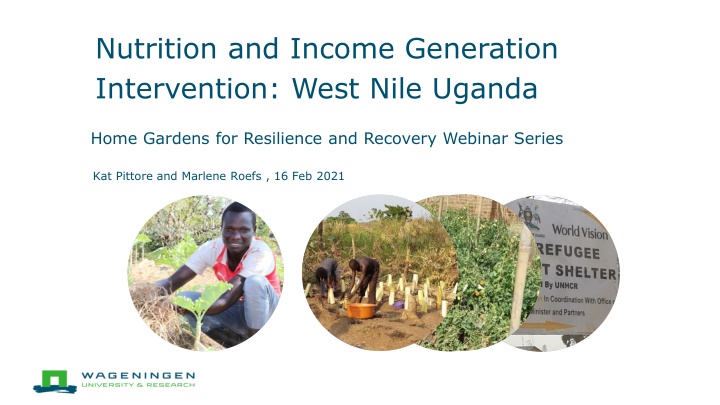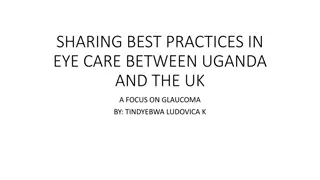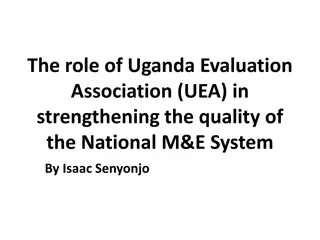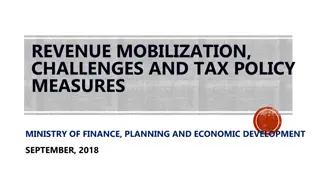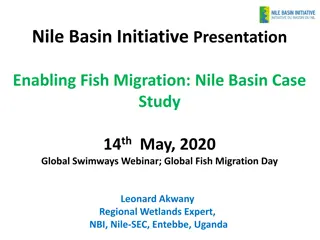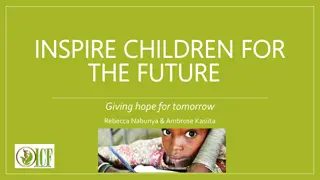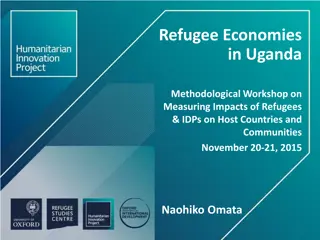Nutrition and Income Generation Intervention in West Nile, Uganda: Empowering Communities through Home Gardens
This webinar series discusses a project in West Nile, Uganda, focused on enhancing nutrition and income generation through interventions like vegetable production, seed quality support, and nutrition education. By promoting household gardens and commercial vegetable farming, the project aims to boost food security and economic resilience in refugee and host communities. The initiative also includes training programs to enhance knowledge and capacity among NGO workers and extension officers.
Download Presentation

Please find below an Image/Link to download the presentation.
The content on the website is provided AS IS for your information and personal use only. It may not be sold, licensed, or shared on other websites without obtaining consent from the author.If you encounter any issues during the download, it is possible that the publisher has removed the file from their server.
You are allowed to download the files provided on this website for personal or commercial use, subject to the condition that they are used lawfully. All files are the property of their respective owners.
The content on the website is provided AS IS for your information and personal use only. It may not be sold, licensed, or shared on other websites without obtaining consent from the author.
E N D
Presentation Transcript
Nutrition and Income Generation Intervention: West Nile Uganda Home Gardens for Resilience and Recovery Webinar Series Kat Pittore and Marlene Roefs , 16 Feb 2021
Agenda Overview of the project context: West Nile, Uganda Overview of the Nutrition and Income Generation Intervention Evaluation of the Project Results Conclusions and discussion questions 2
Nutrition and Income Generation Intervention 1. Household Nutrition: Refugees and host communities are supported in vegetable and fruit production and awareness raising about the importance of good nutrition 2. Commercial vegetable production: Farmers with larger plots of land are supported to produce, market and sell vegetables, fruits, and legumes, 3. Quality seeds: Existing local seed businesses are supported to produce and market quality seed to both refugee and host communities.. 4
Theory of Change Increased consumption of vegetables Increased production farmers Improved production home garden Increased uptake of QDS
1. Household Nutrition: Home gardens Improved production of vegetable /fruit /legume /tuber production among targeted households and Omugo Settlement Small gardens (5m x 5m) with 6-8 crops 80 key farmers linked to 10 community members (800) supported in 2020 6
1. Household Nutrition: Nutrition education Increased knowledge of nutrition and nutritious crops among refugees and host communities Trainings on how to prepare nutritious foods 7
1. Household Nutrition: Training of NGO workers on nutrition education Increased capacity to promote consumption of nutritious foods by NGOs and extension officers Trainings for staff of other organizations to promote nutrition 8
2. Commercial Vegetable Production: Agronomic skills Increased knowledge of key farmers to promote best fit agricultural practices in their communities Farmers with 25m x 25 m plots; grow one crop (chosen by farmer), commerically 1075 farmers trained in 2020 9
2. Commercial Vegetable Production Training of Trainers in Vegetable Production Increased knowledge of extension staff to promote best fit agricultural practice ToT for a group of 27 agricultural extension workers, trainers at the agricultural extension collage 4 week training run by Wageningen Plant Research 10
2. Commercial Vegetable Production: Agronomic Production Increased knowledge of farmers to farm commercially Farmers are supported to learn about how to run farms as a business 125 key farmers supported in 2020 11
3. Quality Seed: LSB support Increased capacity of local seed businesses (LSB) in quality seed production Technical support to LSBs Testing of seeds Increased awareness of QS (Certified and QDS) among seed users 12
Evaluation Questions Evaluation focused on the effects of the intervention on the refugee households What is the effect of NIGI on the HH dietary diversity score, the food consumption score and the cooping strategy index? What is the effect of NIGI on the consumption of specific food groups? What is the effect of NIGI on the HH home production of vegetables? 13
Resilience Index Measurement and Analysis (RIMA) Used The resilience index measurement and analysis (RIMA) questionnaire of the Food and Agricultural organization of the United Nations The RIMA tool was developed by to quantitatively assess resilience. Indicators include: household food security, using the household dietary diversity score (HDDS), the food consumption score (FCS) and the cooping strategy index (CSI) Data collected in June/ July just after COVID lockdowns were lifted 14
What is the effect of NIGI on the consumption of specific food groups? 16
What is the effect of NIGI on the HH home production of vegetables? Control Intervention Production in the previous 12 months: More varieties produced More volume produced More money earned from fruit and vegetable production N Median (Q3-Q1) N Median (Q3-Q1) Mann- Whitney U test p-value Number of different fruit and vegetable types 17 5 2.0 (2.0) 17 4 3.0 (3.0) <0.001* Volume fruit and vegetables produced (KG) 17 5 10.0 (35.0) 17 4 40.0 (71.50) <0.001* Money earned from fruit and vegetable production (UGX) 17 5 0 (0.0) 17 4 0.0 (44625.0) <0.001* *Significant after is adjusted for multiple testing using BH method
What is the effect of NIGI on the HH dietary diversity score, the food consumption score and the cooping strategy index? Statistically significant increase in HH dietary diversity in participating households compared to non-participating households No change in food consumption score No impact on coping strategy index 18
Overall Conclusions We saw no effects of participation in NIGI on coping strategies this is logical as we did not focus on food security per se We did see high higher production of vegetables and fruits in participating households This corresponded with increased household dietary diversity. 20
Guiding Questions Based on what you have heard, what do you think the key strengths and weaknesses of this intervention are? Do you think that this approach is replicable? What recommendations do you have for us in taking this further? 21
